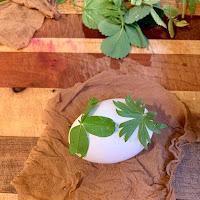March/April 2023 Art Blog
Display of: District-wide Art Project
The ‘All Our Hearts Are In It’ displays were enthusiastically enjoyed by families at Kent and Bacich during both Open House evenings. Combining the works of staff and students into a shared expression of our connection proved very powerful to all involved.
Now as envisioned in our original proposal we are planning to distribute the 20 columns and banners to the District Office meeting room, Kent Library, and Bacich office spaces for ongoing display.
TK/K: Black Cat White Cat
Students were introduced to the concept of contrast: to use different elements or opposites to make areas in artwork stand out. The tint white and the shade black are the lightest and darkest shades to create the highest, strongest contrast and a dramatic statement.
Are black and white colors? Many do consider black to be a color, because you combine other pigments to create it on paper, but in a technical sense, black and white are not colors, they’re shades and tints. They are augment colors, and yet they do function like colors. They evoke feelings and allow for balanced, and aesthetic pleasing designs.
1st: Bird sketching/drawing
Students were introduced to Jane Kim, American painter, science illustrator and the founder of the Ink Dwell studio. She is best known for her large-scale murals, created with the purpose of promoting advocacy of the natural world. In 2015, Kim completed a 70-foot by 40-foot mural called the Wall of Birds at Cornell University's Lab of Ornithology.The mural depicts 243 modern bird families, all life size and superimposed on a map of the earth. It took her two and a half years to complete the work.
During directed sketching lessons students were guided through a series of sketching check-points, to capture the position and gesture of a bird and its distinctive features, such as, beak, legs, tail and wing feathers. Students enjoyed sketching the California Robin and the California Quail and were amazed how realistic their drawings came out to be.
2nd: Loom Weaving
Students were introduced to the history of weaving and the different kinds of looms that can be used to create a tapestry art piece or cloth. Weaving is an art form practiced in cultures around the world.
A loom is a device/frame used to weave cloth and tapestry. The basic purpose of any loom is to hold the warp threads under tension to facilitate the interweaving of the weft threads. The precise shape of the loom and its mechanics may vary, but the basic function is the same.
Once the cardboard looms were completed students were ready to take on the weaving challenge. Weaving helps develop hand-eye coordination because the activity encourages children to use the visual information received to coordinate the movement of the hands. It isn't an easy task when starting out but with practice and perseverance students made great progress. It is a common sight to see children really concentrate when they weave. There is often a peaceful calm class environment as students carefully move the material between the warp. Students were so very proud of their tapestry works.
3rd: Eyes/Japanese Anime Portraits
Japanese Anime is an art genre that focuses on the eyes of characters. The word anime — pronounced "ah-knee-may" — is an abbreviation of the word animation. Anime character’s eyes are over exaggerated and often take up about one third of the characters face to illustrate the actions and emotions of characters. Students were introduced to “manga” creator artist Osamu Tezuka. Practicing the manga cartoon drawing style students sketched eyes and unique eyelid shapes in creative, descriptive ways.
With the attention on unique, expressive eye shapes, students drew their own Japanese anime characters and used their previously acquired color pencil cross-hatching techniques to color their portraits.
This lesson built on our social justice/arts integration unit of human skin color. Students engaged in the inquiry and conversation: “Why do the shape of eyes differ in different races?”
They are not different eye shapes, they are different eyelids. Some Asians as well as others have what is called an epicanthic fold in their upper eyelid and it makes the eye appear to be an elliptical shape.
The epicanthal fold is a skin fold of the upper eyelid covering the inner corner of the eye. It is often seen as a normal finding in very young children and is most pronounced in some people of Asiatic descent. There are also varying degrees of the fold throughout the world's population.As far as its evolutionary purpose, there are various thoughts on this and it has been a topic of discussion since the 19th century.
One hypothesis is that it was a trait that evolved to protect the eye from the blowing sand of the Gobi Desert. Interestingly, the Bushmen of the Kalahari desert also have epicanthal folds. It has also been suggested that the fold itself might provide a level of protection from snow blindness. It can be seen in Siberian peoples and Inuits. There are several other hypotheses but these are the two most widely known.
Repoussé or repoussage (French “pushed up”) is a metalworking technique in which a malleable metal is shaped by pushing, pressing or hammering from the reverse side to create a design in low relief. Chasing or embossing is a similar technique in which the piece is worked on the front side, sinking the metal. The two techniques are often used in conjunction.
Students sketched fantastical creatures to emboss into a 36 gauge, aluminum metal sheet. Using a variety of tools/nibs students burnished and chased the metal to achieve a low relief. The experimentation with patterns, textures and designs gave each student lots of creative freedom to create their own repoussé masterpiece.















I always love how the artists interpret the same instructions so differently! Thank you!
ReplyDelete